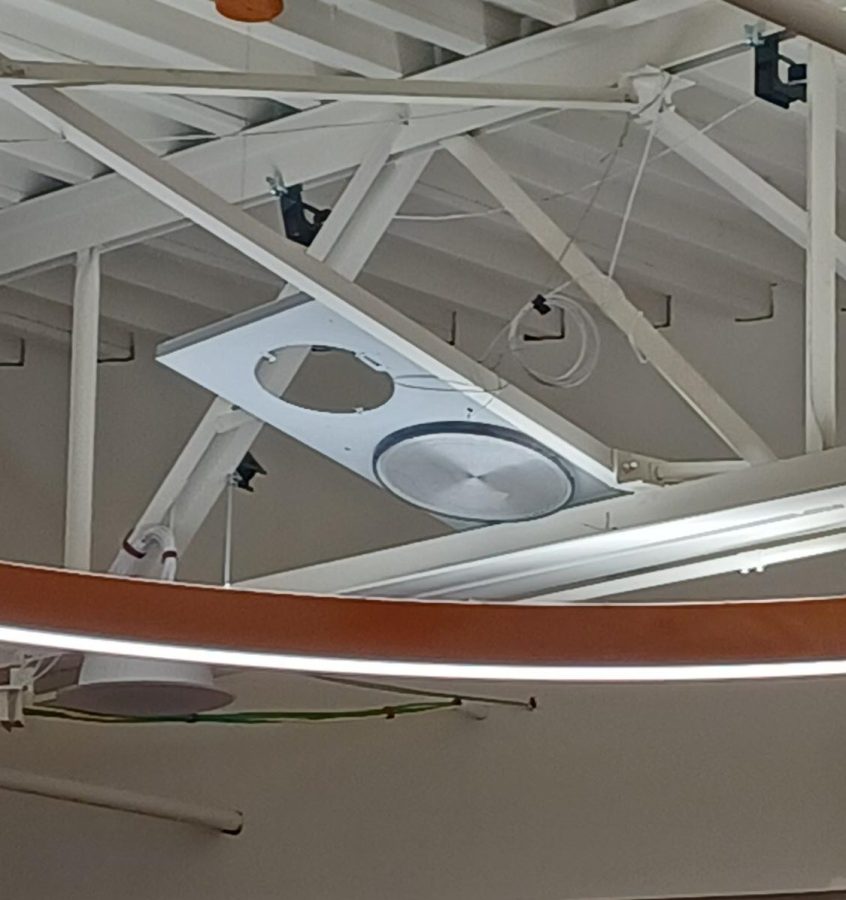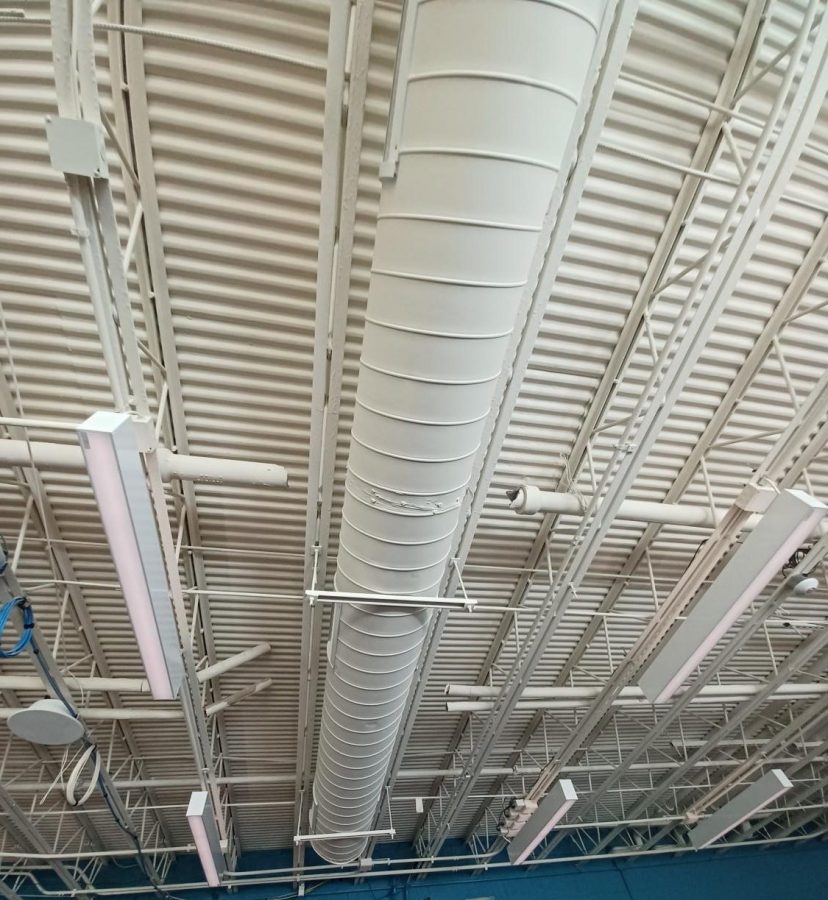Cutting Corners; the Renovation Saga of South
An old clock/speaker combination meant for a wall that has had its clock removed and its speaker cannibalized for use in the cafeteria ceiling. Instead of screws, it has been fastened to a beam with safety wire.
April 4, 2023
Westerville South High School has been educating students since it was first opened in 1960. It was originally dedicated as Westerville High School when it was constructed, but it was renamed to Westerville South after the opening of Westerville North in 1975. South is the oldest of the three high schools; inevitably meaning that the integrity of the building’s original systems has broken down, certainly to a greater extent than the other schools.
As South aged, the options were to either fully renovate the building or tear it down and replace it. As you probably noticed, the school district opted to fully renovate the building with better technology and accommodations to aid in the success and ease of educating students.
The Scribe feels that these renovations will ultimately benefit the school. They have brought the school’s technology in accordance with reasonable contemporary expectations by installing whiteboards, new touch screen smart boards, new HVAC systems, new lighting and more. However, the refinement of some of the renovations leaves a lot to be desired.
Temporary benefits with regards to education and flexibility could be all too easily overshadowed by the dubious constitution of the renovations should it cause issues as the newly renovated areas begin to withstand the grueling test of time.
The renovations have succeeded at accomplishing their goal of creating a better education environment. The new interactive screens aid with teacher presentations and far surpass the capabilities of the aging smartboards.
The hallway work spaces offer additional flexibility for teachers and students working on group projects; the spaces also allow clubs and other after school activities to meet in settings outside the classroom. The new gymnasium also provides a better school meeting center for assemblies and improves the experience of the South sports teams and the many other individuals who use the gym.
The primary criticism of the renovations are the corners that have been cut with regards to craftsmanship. The faux wooden flooring in the classroom was supposed to be more comforting than the cold ceramic tiling that preceded it; however, this wood flooring is of incredibly shoddy quality, and is already beginning to show signs of premature wear under desks and chairs. This is especially bad for high traffic areas, like the lunchroom. This type of flooring is also incredibly good at absorbing dirt.
The absence of a dropdown ceiling is nothing short of lazy. As well as being extraordinarily ugly, students get an uninterrupted view into a labyrinth of exposed electrical wires and piping, much of which is now defunct and has simply never been removed. You can tell which ones are no longer used by the insulation coating; the insulation on old pipes is torn and falling off. The maze of different wires and pipes in the ceiling can also prove to be distracting to some students who have trouble paying attention in class.
The absence of a dropdown ceiling combined with the cheap drywall of the new walls means that the acoustics between classrooms are virtually unimpeded. If you listen carefully, you can hear another teacher in an adjacent room while you are taking a test; and if a teacher is having their students move their desks in a room above, the sound of the scraping is unbearable.
The massive HVAC units positioned in the corners of the classrooms present an annoying obstacle for teachers. They are not small, being around the size of a large refrigerator, and they are not quiet. Their constant intake of air is extremely distracting, especially when you are trying to concentrate on something; and if the unit is located in the front of the classroom, this problem is only compounded. It is perplexing to see that these units were placed within the classrooms themselves, rather than simply on the roof or outside somewhere. Also baffling is why an HVAC unit for one room is bigger than the standard home furnace.
The most frustrating aspect of the new renovations are not new fixtures, but the ones lurking under the surface that have still not been fixed, such as the plumbing. Obviously, the issues with the plumbing have been accentuated by other problems such as student abuse; however, if the focus of the renovations are to repair South’s aging infrastructure, then why are crucial elements like plumbing being left untouched?
What the renovations bring in terms of educational benefit, they lack in quality and longevity. These renovations were supposed to bring us a completely new South; instead, they simply placed a bandage over the old one. This is in the form of plastic flooring, removed ceilings, massive HVAC systems within the classrooms, exposed wiring, and a coat of paint.
These renovations were supposed to extend the life of South for years to come; however, the lack of quality within the renovations compounded with the retention of so many aging features that were causing extensive problems in the first place, almost nullifies the impact that the improvements will have on the longevity of the school.














